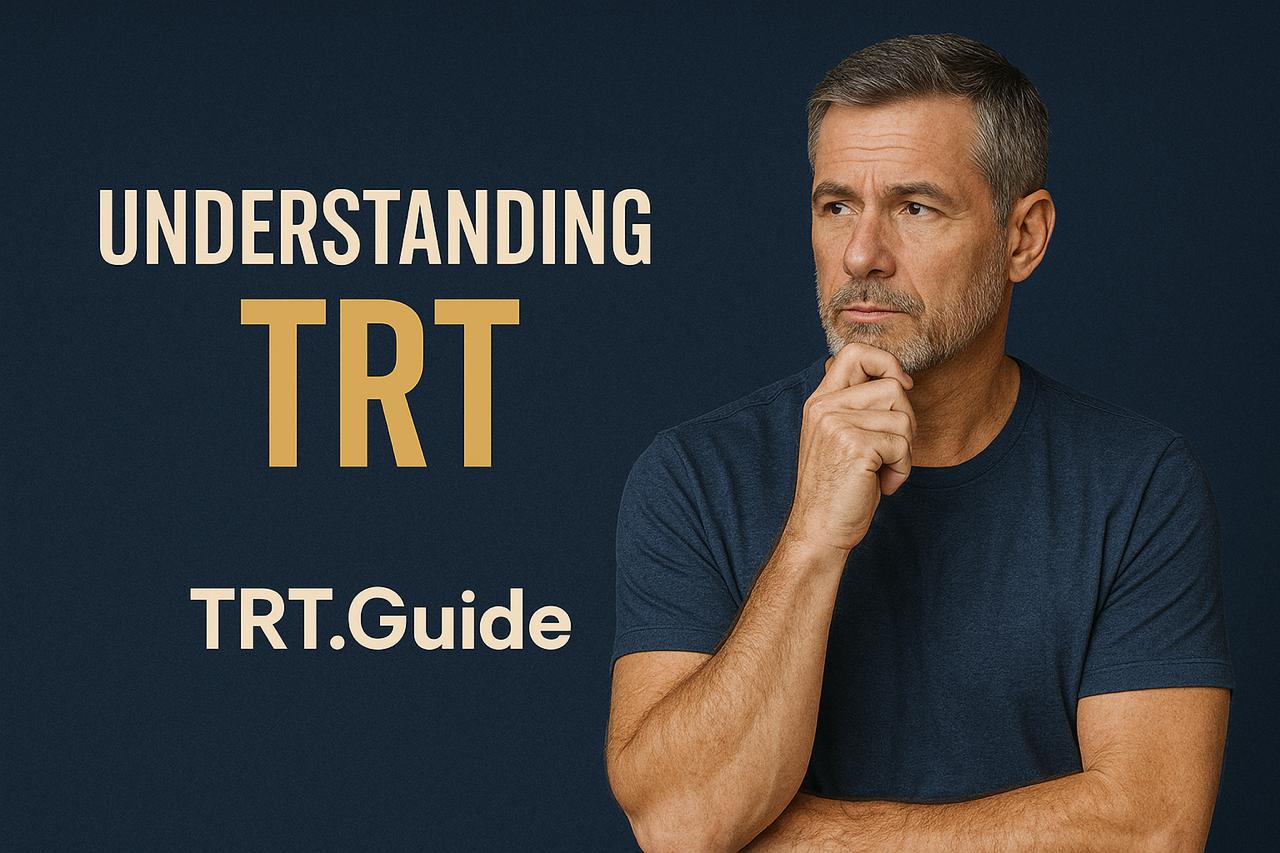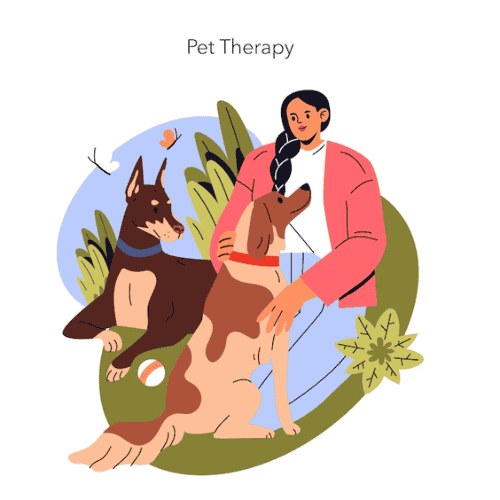Should there be a change in the behavior and health of your dog, you may be asking whether testosterone therapy is the right solution. As in the case of humans, the hormone testosterone is of great significance for the dog’s well-being. As the pet owner, you need to know what influence the imbalance of hormones can have on your two-pawed friend.
More and more people are going after testosterone therapy for dogs to fix several health issues these days. Furan, your dog to have a loss of energy due to hormonal changes, or a complete new palette of tastes then treatment might be the way to go. The discussion here is focused on giving readers a chance to get the whole idea of the good points, risks, and things to take into account in the process of testosterone therapy so that you have a learned stance in which to make decisions about your pet.
Overview of Testosterone Therapy for Dogs
The use of testosterone therapy for dogs is designed to write off bad influences and hormone inconsistency left on their health and behavior. This therapy results in dogs that show potential for overcoming such energy, mood, and appetite changes, which are merely few examples of the overall effects of the low level of testosterone.
What is Hormone Replacement Therapy?
Hormone therapy for dogs is actually the thing to do, in case of a decline in natural hormone production in dogs by supplementing them with synthetic hormones they lack. The process acts to positively influence hormone levels, thereby assisting formerly neutered, then aging dogs to return to normal. The process typically takes place in a variety of ways, including injections, gel, or implant.
Experienced and certified veterinarians will recommend that a selection of tests serve as the basis for the dosage and administration plan. This will also be accompanied by routine checks to assess the hormone level and make alterations, where necessary. The balance of favorable effects and side effects should be considered as it is the feature of inappropriate dosage that leads to medical complications; hence, thus the crux of the issue.
Testosterone therapy is frequently prescribed for a number of reasons that are not limited to dogs only. Symptoms such as low energy levels or sluggishness are the ones that doctors often need to consider in the light of the absence of testosterone production in the body.
Behavioral problems, such as the excessive level of aggression or anxiety seen in the dog or the lack of his/her appetite or stamina, are indicative of the necessity of the dog’s therapy for increased living standards. Some of the most common conditions are hypogonadism, certain cancer treatment types, and age-related alterations. But for each of the said situations, a veterinarian has to evaluate thoroughly to see if a testosterone-boosted therapy along with an accordingly developed treatment plan is needed or not.
Benefits of Testosterone Therapy
Testosterone therapy in dogs has a series of advantages, the main one being the improvement of their health, as well as, the overall emotional and physical quality of life.
Enhanced Behavior and Mood
Testosterone therapy uplifts mood and behavior in dogs who are experiencing hormone imbalances. Testosterone therapy is one of the ways to improve a dog’s behavior and mood. Common signs in dogs, which are low in levels of testosterone, are fear, aggressive habits, or they can be asocial. When testosterone is introduced, many dogs’ social skills improve, and the dogs exhibit a lesser degree of aggression. According to one research study, the behavior of dogs that received testosterone therapy was less anxious than that of unassisted dogs, and they were more open to speaking to their owners and other animals.
A significant increase in the playful behavior of dogs and the simultaneous clearance of their destructive behavior are some of the changes you can notice. A dog’s willingness to be involved in a game is an indicator that his/her testosterone levels are high. Frequent checks by your veterinarian guarantee that the dose received serves the purpose, i.e., it is the least possible that side effects will occur, and at the same time, the benefits of the therapy are at a maximum level.
Enhanced Physical Performance
Testosterone treatment benefits physical performance in canines, most notably in the time of aged dogs and the ones that have been sterilized. In case of low testosterone, the body has very little energy, and muscle mass and stamina are highly affected. Testosterone production can be enhanced through therapy as a direct result of which muscle growth will also occur thus resulting in increased stamina and strength.
According to recent research, testosterone-treated dogs are becoming more agile and have quicker reaction times in physical activities. Dogs may become more eager to exercise, leading to an increased level of physical activity and thus to better health. The therapy’s dosage varies according to the needs of the individual, maximizing their physical wellness and activity levels. It is good to note that this individual-based treatment is designed for safety while at the same time, it provides the best results in the pet’s condition.
Risks and Side Effects
It’s important to keep your dog under observation since the negative effects and risks are a party of the testosterone dog therapy. By all senses, to maintain tracking of health conditions should be considered necessary throughout the treatment.
Common Side Effects
Not only can there be notable common side effects of the hormone replacement method of therapy such as augmented aggression and excessive barking, but there is also the possibility of your dog’s behavior changing. Now along with this, you should know that mental and physical effects can also result in thirst and urination respectively. Furthermore, if the injection point or the application of the gel is where the skin undergoes the reaction, the individual symptoms of the skin might be some formed that way like rash or irritation. Don’t hesitate to get in touch with your vet if your dear pet is uncomfortable during the treatment phase.
Long-Term Health Concerns
The issue of long-term health complications from testosterone therapy in dogs is still widely unsettled. There are increased chances of prostate problems, including BPH and cancer if the case of the side effects is persistent. On the other side, it is likely to bring about liver ailments and cardiovascular diseases via various hormonal imbalances. Moreover, it is believed that some metabolic rates changes can occur due to hormonal therapy that may lead to obesity, or diabetes. Your veterinary doctor will confirm the presence of complications, so you will receive the right treatment. First of all, never exclude professional opinions when deciding about the future.
Administration and Dosage
There are particular ways of testosterone therapy administration to dogs and the right dosage for each dog depending on its age- and size-related factors. For the therapy to be efficient, it is of great importance to comprehend the mentioned points and to abide by them as the plan of the therapy.
Methods of Administration
Transferring testosterone therapy can be done with a variety of methods that are suitable for the needs of the dog and according to the vet’s recommendations.
- Injections: Subcutaneous or intramuscular injections are implemented, which provides a more direct way for the hormone to reach its destination. This way the rate and the effect of absorption are the highest. Your veterinarian will usually give you these injections every few weeks as per their advice.
- Gels: Gently spread topical gels over the areas of the body where the hair is thin. This way of administration results in a gradual absorption of the hormone. The need for daily application may be in the case to many dogs in order to ensure a stable hormone level.
- Implants: Put implanted pellets to use for the release of a prolonged hormone. Such implants, which are placed under the skin, function to sustain the hormone that the body needs. These pellets are normally long-lasting and can be one of the ways to work with less frequency of administration.
Every method has some points to think of, such as the dog’s comfort and the owner’s diligence to have the therapy done properly. On all occasions, contact your vet first who can advise you on the method most suitable for the case.
Recommended Dosage Guidelines
Comply with the given dosages’ preparation guidelines to ensure that the therapy of testosterone is both safe and effective.
- Initial Dosage: In general, at the beginning of treatment, doctors will prescribe a dosage that can range from 0.5 mg to 2 mg per kg of the dog’s body weight for the pet’s life, disease, or confirmed diagnosis.
- Adjustment: After the induction of the therapy, the veterinarian will keep an eye on the patient’s reaction and inform the patient of the necessary dosages that have to be optimized to gain the best effects and cause fewer side effects.
- Regular Monitoring: Hormone levels as well as general health should be checked every 4 to 8 weeks to follow up the treatment process.
Veterinary Consultation and Suggestions
It is very important to get advice from a veterinarian before you give your dog testosterone therapy and after that. A comprehensive examination is crucial as it will decide if therapy is the best option for your pet’s specific case.
When Therapy is a Viable Option
Sometimes you should consider testosterone therapy for your dog when he displays certain actions that may be related to the hormone deficiency. These signs might be as follows- lack of energy, little interest in playing, eating less, and losing weight.
If your dog is afraid of other dogs or humans, they might need hormone treatment. Ask your vet to tell the difference from other problems. Older dogs that have got neutered could use the hormones most of the times.
Vital Information to Share with Your Vet Regarding the Therapy
Before you start testosterone therapy, tell your vet a number of essential matters.Give information to your vet about the dog’s history and tell them about current symptoms like changes in behavior, weight or health concerns. Find out the possible side effects involved with the therapy for example aggressive behavior which can be increased among your dog and changes in appetite and thus be able to weigh out the dangers.
Also, ask about the ways you can use for your pet’s delivery—be it injection, gel or any of the three types of implants. A plan to monitor treatment effects after the inception of therapy is the key to follow-up. Monitoring allows frequent checks, hence the detection of any fatigue-related impact that may prompt correction of the therapy. The two-way conversation with your veterinarian lets the most appropriate and effective treatment plan be put in place for your companion.
Conclusion
Testosterone therapy is an option which is useful for certain health problems in a dog. By hormonal balance recovery, it can really do the job to make the dog more energetic and to raise his/her spirits in general. In any case, only caution can prevent the abuse of the therapy.
Only a veterinarian can give you the green light and confirm that the treatment with testosterone is the only valid option with your dog. He will offer you the options that he thinks will give positive effects on the condition and the risks of the procedure while working out a treatment plan to suit the individual. It is essential to undertake regular check-ups and proper communication with the doctor to achieve the best results. With your dog’s health and happiness as your top priority, you are certain to have a more fulfilling life with your pet.
Frequent Ask Questions
What is testosterone therapy for dogs?
Testosterone therapy for dogs is when a veterinarian prescribes them with the artificial hormone testosterone for such purposes as making the dog’s hormones homogeneous, particularly in castrated neutered males and old dogs. When given to older dogs exhibiting hormone imbalances and other symptoms, the medication can lead to changes in energy, attitude, and behavior.
What conditions can testosterone therapy treat in dogs?
This kind of therapy is effective in treating conditions like decreased energy levels, behavior problems such as anxiety and aggression, and chronic diseases. Hypogonadism, and age-related changes are two other conditions that can be treated with this therapy.
How is testosterone therapy administered to dogs?
Testosterone comes in three forms; injections, gels for topical administration, and implanted pellets. Making sure that the dog is comfortable with the treatment and that the owner is able to administer the treatment method that is chosen is what should be looked upon by the respective pet owner.
What are the benefits I can anticipate from the testosterone therapy for dogs?
The benefits may be seen in such areas as increased energy levels, better mood, less anxiety, improved social interactions, and even an increase in physical performance, especially in situations of the male who are aging or getting neutered.
What are the possible dangers of testosterone therapy?
Symptoms of the said type are that the dog may become more aggressive, bark unnecessarily, gain some weight, and more things that the dog does in its appetite. Risks that arise in prostate problems, liver damage, and changes in metabolism that leads to overweight or even diabetes, if they happen over the long term, can also be taken into account.
What is the process of keeping track of the reaction of my dog to testosterone therapy?
Check-ups that are conducted at a veterinarian’s clinic should be a must to track hormone levels and the overall well-being of the dog. You have to make a note of any changes in his behavior, his energy level, or his appetite so that your vet can do the necessary adjustments to the treatment.
Is there a certain period when I should opt for my dog to have testosterone therapy?
That is, in fact, a situation when the dog’s absence of hormonal deficiency in particular which signals lack of energy, lack of interest in plays, or behavioral changes, for example, anxiety or aggression is the main concern, will force you to consider the use of hormone therapy; in such a case, your dog would require a professional opinion from the vet.
Why the assessment of a veterinarian should be considered prior to the commencement of testosterone therapy?
A veterinarian’s complete examination has the purpose of deciding whether it is safe to use testosterone therapy for the dog looking at the dog’s actual status and its health history. This is considered a significant point because the creation of an efficient treatment plan that fits the requirements of your own dog depends on this part mainly due to the vet’s expertise.






